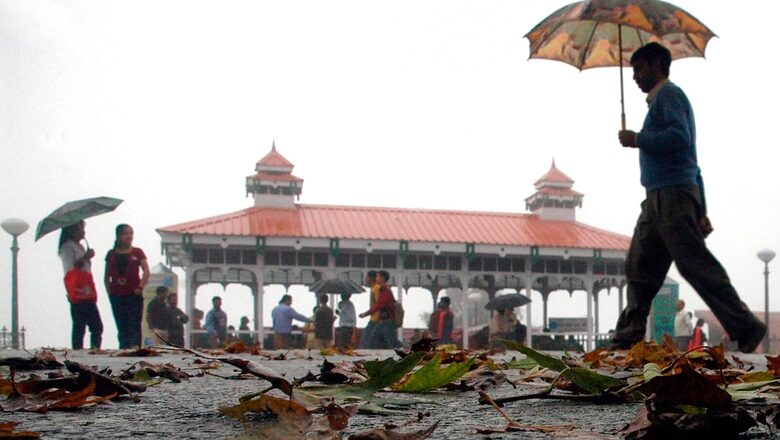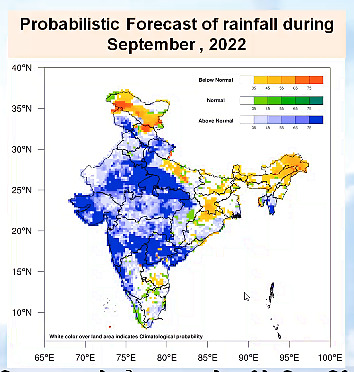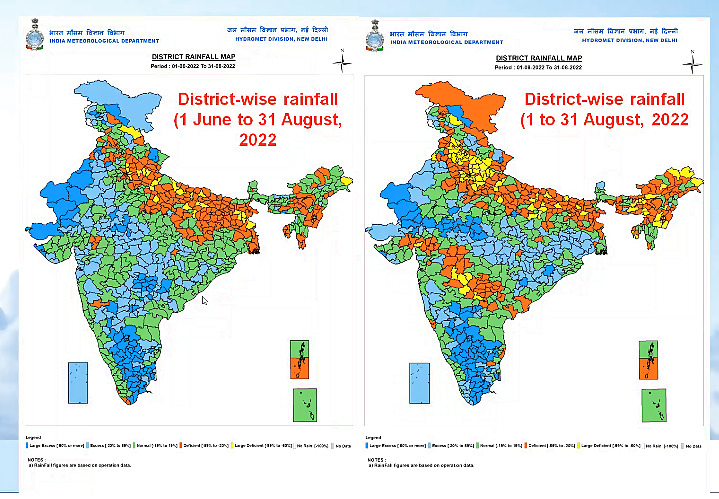
views
The southwest monsoon is in full swing, and is expected to not begin its retreat from northwest India till mid-September. According to the India Meteorological Department (IMD), a fresh low pressure system or a cyclonic circulation is likely to develop in the Bay of Bengal, which is expected to power up the monsoon after September 9.
The current forecast suggests the monsoon will remain active over northeast India and southern states till September 5, and then shift momentum over central and north peninsular states during the second week.

ABOVE NORMAL RAINS IN SEPTEMBER
The weather department has further predicted above normal rains for most parts of the country in September, except many parts of northeast India, and some parts of east and northwest India. “The ongoing spell of rain would help compensate for some deficit in the Uttar Pradesh, Bihar, and Jharkhand, but overall it seems that the region might end up with deficit,” IMD director-general M Mohapatra said on Thursday.
According to the IMD, the monthly rainfall could be above 109% of the long period average (LPA) of 167.9 mm. As rainfall activity picks up across states, the maximum temperatures are also likely to drop, except in certain pockets of northwest and central India, where the day temperatures may still remain above normal.

As of September 1, the monsoon rainfall has been 6% above normal for the country as a whole with 28% excess rains in south peninsula, 17% excess in Central India, and -2% over northwest India. However, eastern and north-eastern states continue to reel under a staggering deficit of 17%. The lower Gangetic belt witnessed below par monsoon season, with as many as six sub-divisions facing a drought-like situation.
According to the IMD chief, apart from a few eastern states, southwest monsoon has been good so far, with as many as 45 days of low pressure system. August alone saw as many as 19 low pressure days compared to the normal of 16.3, and as many as four depressions (rain-bearing systems). “There were successive low pressure systems in Bay of Bengal in August which brought good rains, and most of them moved from north Odisha to Jharkhand, Chhattisgarh, Madhya Pradesh to Rajasthan. So, this region got excess rains, and states like Bihar remain devoid of rains,” he elaborated. “All the low pressure systems developed during August intensified into depressions, and one into deep depression.”
NO SIGNS OF WITHDRAWAL TILL SEPTEMBER 15
The weather department has not yet issued any announcement regarding the possible withdrawal of the monsoon yet, but said it is unlikely till mid-September. While normally the monsoon begins to retreat from extreme north-west Rajasthan around September 1, this date was revised last year, after observing seasonal variations.
According to the revised dates, the monsoon usually begins its withdrawal from northwest India by September 17. However, last year, it began receding from western Rajasthan on October 6, September 28 in 2020, and October 9 in 2019.
The ongoing La Nina conditions marked by cooler surface temperatures over equatorial Pacific Ocean have also favoured the southwest monsoon. There are indications, that the La Lina event, which started in late 2020 is likely to continue till the end of 2022, becoming this century’s first triple-dip La Nina, spanning three consecutive winters for northern hemisphere.
EXTREME WEATHER EVENTS
So far, the first three months of the monsoon season has brought as many as 552 very heavy rainfall events, with 115-204 mm rainfall, which was higher than last year, but much less than 2020 and 2019. The number of extremely heavy rainfall events were recorded to be 52. The season has so far been marked by floods across various parts of the country, some of which were also triggered by heavy discharge of water from dams and reservoirs.
Read all the Latest News India and Breaking News here




















Comments
0 comment